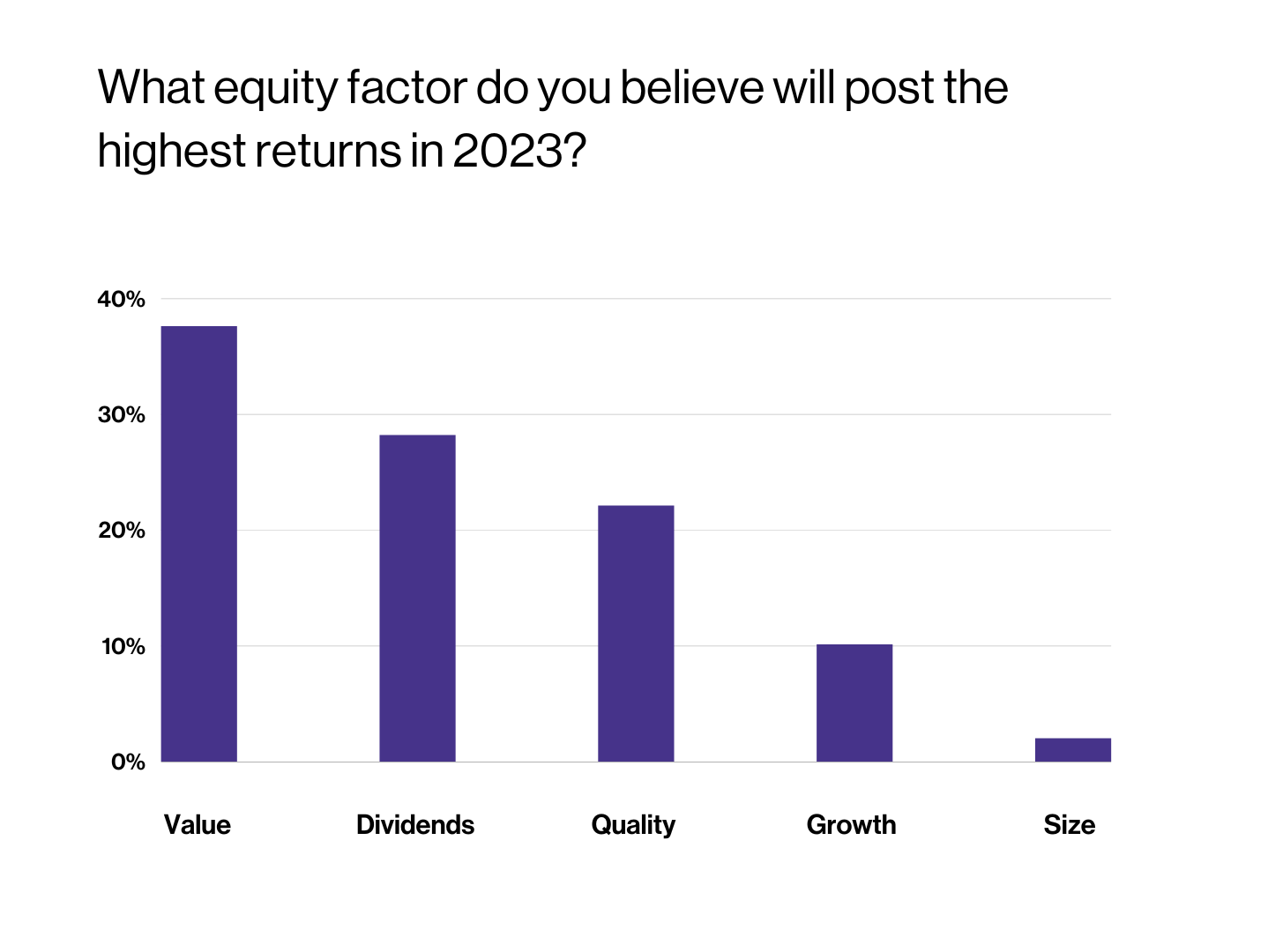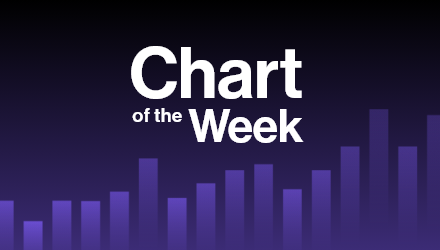While the SPDR S&P 500 ETF (SPY) was down 15% as of early December, advisors have been rewarded by taking an equally weighted approach to the prominent large-cap benchmark in 2022. The Invesco S&P 500 Equal Weighted Portfolio (RSP) declined only 9%, aided by relatively strong performance in the last three months. Yet, when advisors were asked by VettaFi what equity factor they believe will post the highest returns in 2023 during an early December webcast with WisdomTree, they seemed to forget what had recently been working.
Just 2% of those advisor respondents chose the size factor, a distant fifth among the choices. Value (38%), dividends (28%), and quality (22%) were the top three, followed by growth (10%).
 Academic research has shown that mid- and small-cap stocks generally outperform large-cap stocks as investors receive compensation for taking on greater risk of buying shares that may be less liquid and more susceptible to changing business cycles. This has resulted in the size factor. While RSP is the largest ETF that captures some of the size factor, there are others worthy of consideration.
Academic research has shown that mid- and small-cap stocks generally outperform large-cap stocks as investors receive compensation for taking on greater risk of buying shares that may be less liquid and more susceptible to changing business cycles. This has resulted in the size factor. While RSP is the largest ETF that captures some of the size factor, there are others worthy of consideration.
Taking an equally weighted approach instead of a market-cap weighted one would have worked for the NASDAQ 100 — not just the S&P 500 — this year. The Direxion NASDAQ-100 Equal-Weighted Index Shares (QQQE) was down just 21% thus far in 2022, outperforming the 27% loss for the Invesco QQQ Trust (QQQ) by owning more in Biogen and Gilead Sciences and less in Amazon.com and Tesla. QQQE owns approximately 1.0% of all the stocks inside QQQ and charges a modestly higher 0.35% fee.
An equally weighted approach has also worked for some of the larger sectors of the S&P 500 that advisors want to maintain exposure to. For example, the Invesco S&P 500 Equal Weight Information Technology ETF (RYT) was down just 20% year-to-date, or 250 basis points less than the loss achieved by the Technology Select Sector SPDR (XLK). Coincidentally, the Invesco S&P 500 Equal Weight Consumer Discretionary ETF (RCD) was also down 20%, but this was even more impressive than the 30% decline for the Consumer Discretionary Select Sector SPDR (XLY). These equal-weighted sector ETFs charge 0.40% fees.
An equally weighted sector approach has not worked across the board, as the market cap-weighted healthcare sector has outperformed this year.
However, owning large- and mid-cap U.S. stocks with a tilt toward the smaller, lower risk stocks within a broad universe has been effective in 2022. The iShares MSCI USA Size Factor ETF (SIZE) was down 13%, less than the 16% loss for the iShares Russell 1000 ETF (IWB), which we view as a close proxy for broad market large- and mid-cap equities. SIZE’s top holdings, all approximately 0.20% in weight, recently included Burlington Stores, Etsy, Catalent, Horizon Therapeutics, and Okta. SIZE has a 0.15% expense ratio.
The size factor has been rewarding in 2022 due to high dispersion among returns. While we are not necessarily forecasting a repeat in 2023, we think more advisors should consider equally weighted or smaller large-cap ETFs.
For more news, information, and strategy, visit the Portfolio Strategies Channel.

